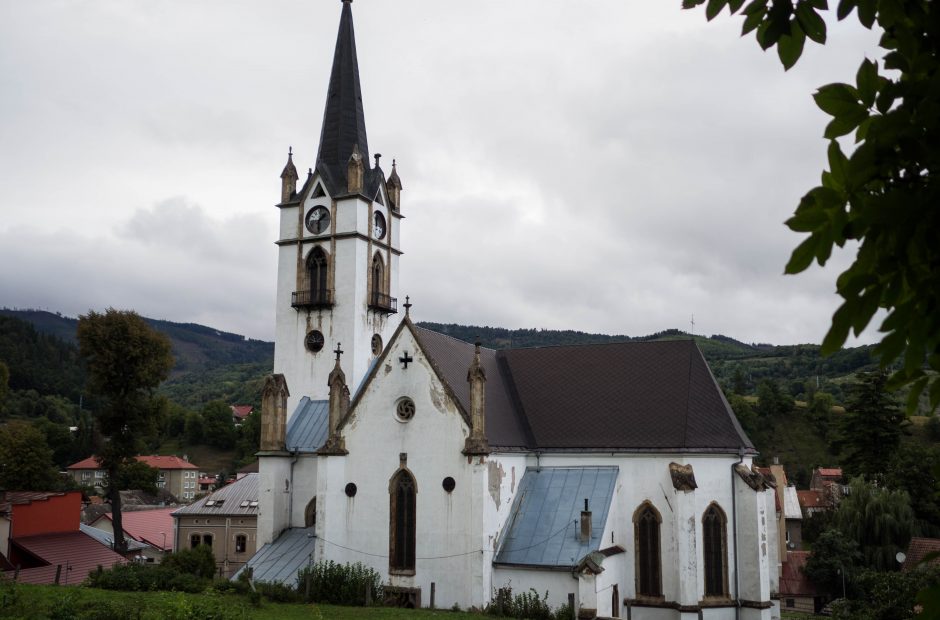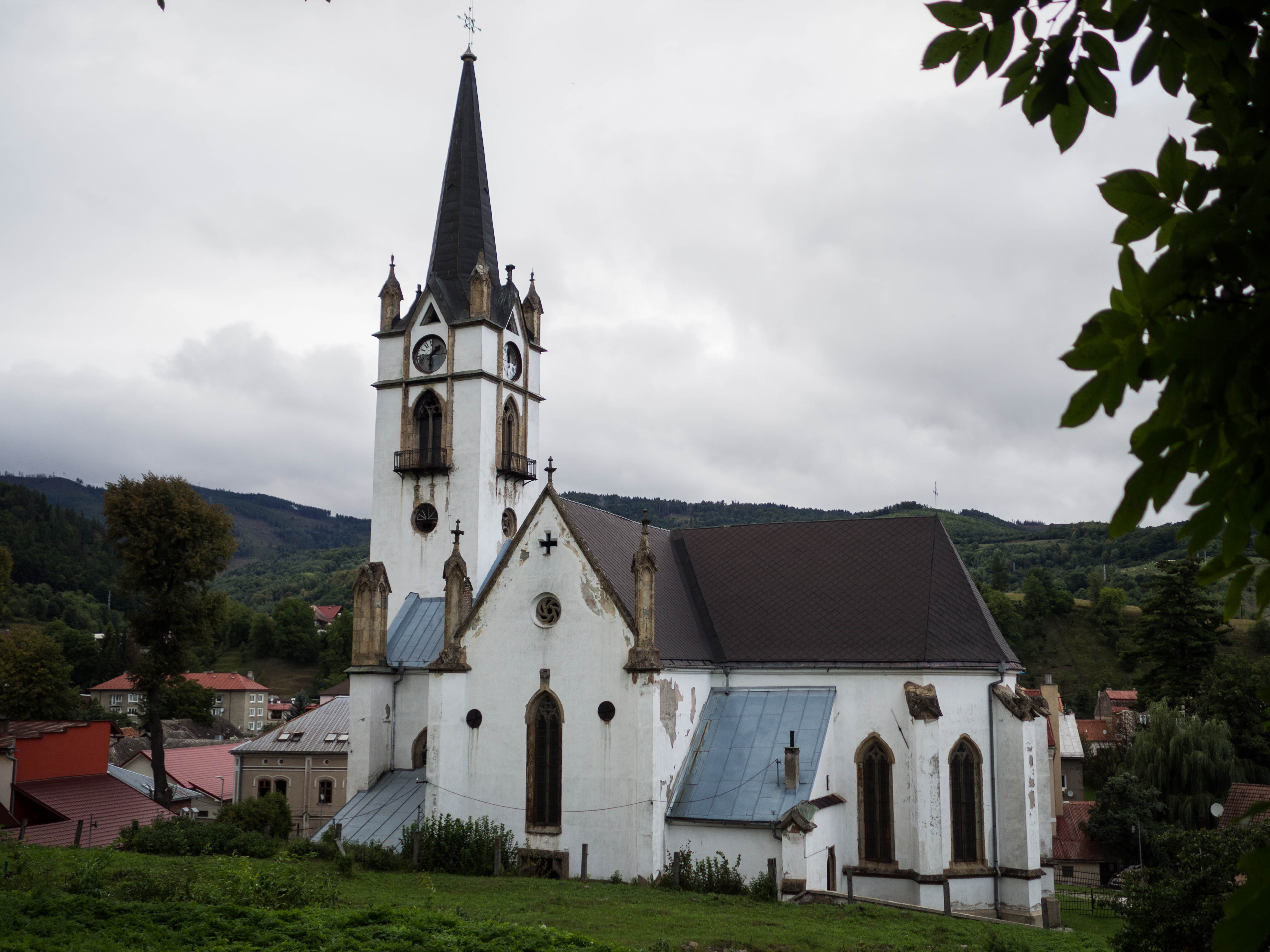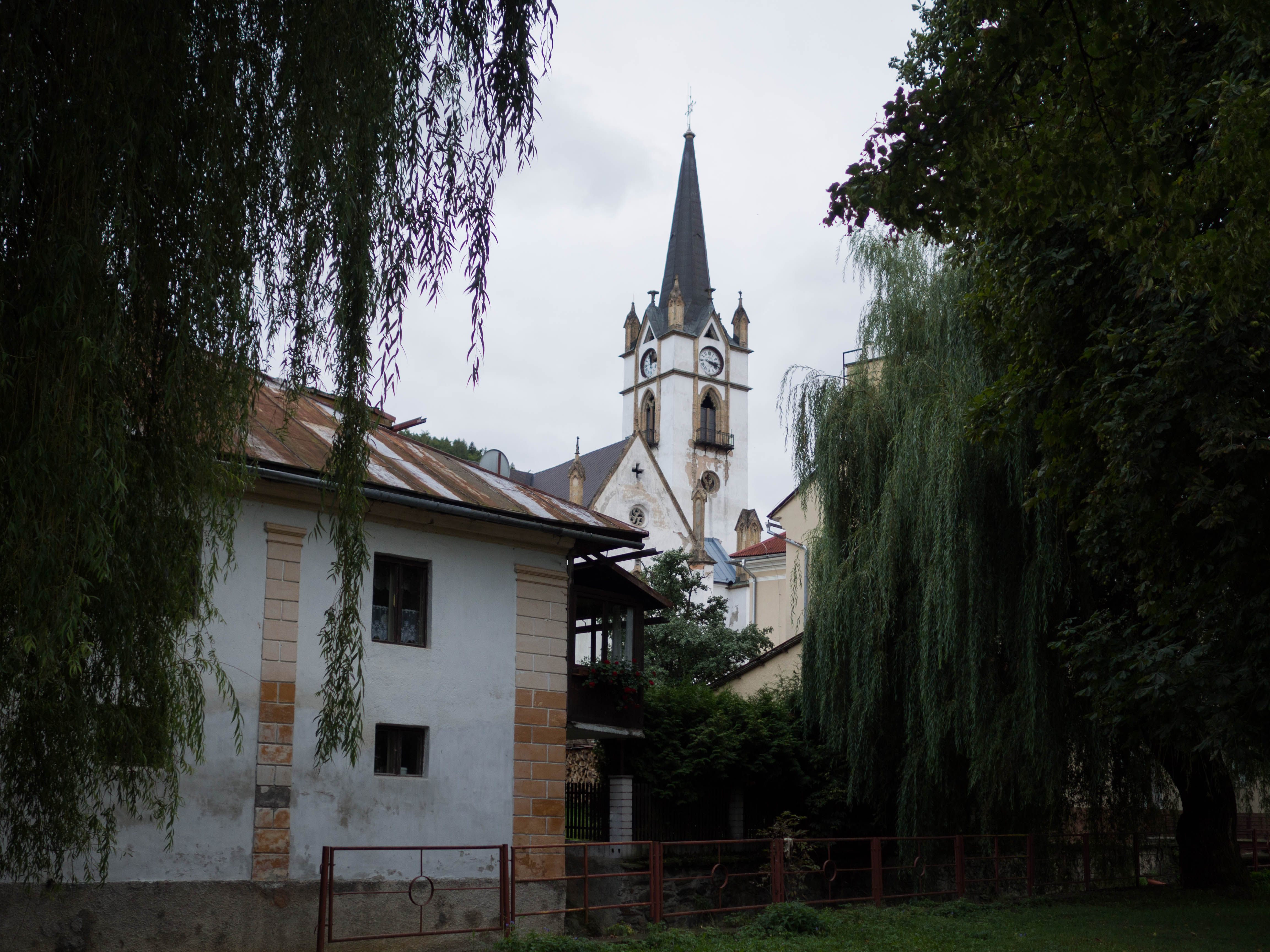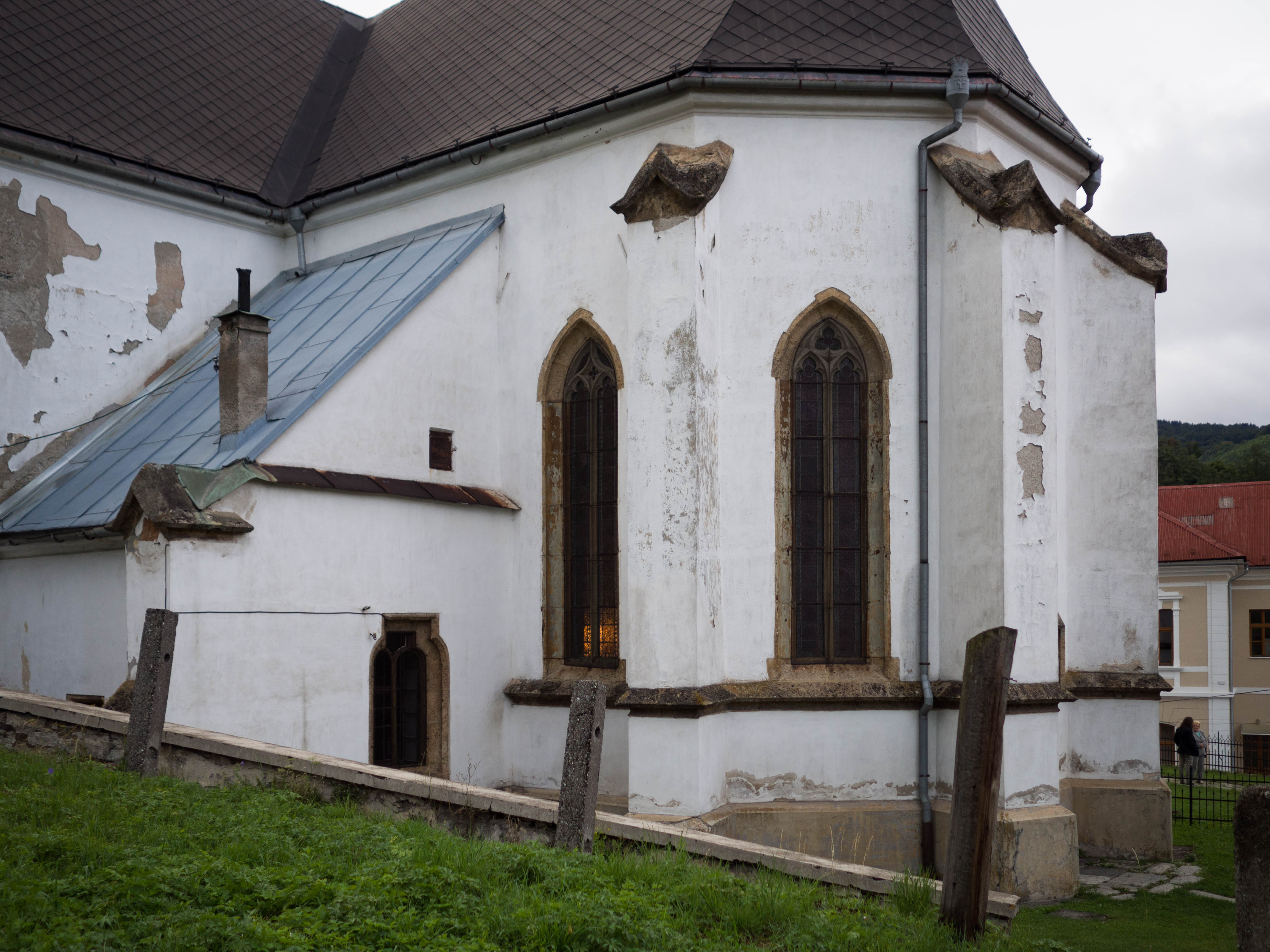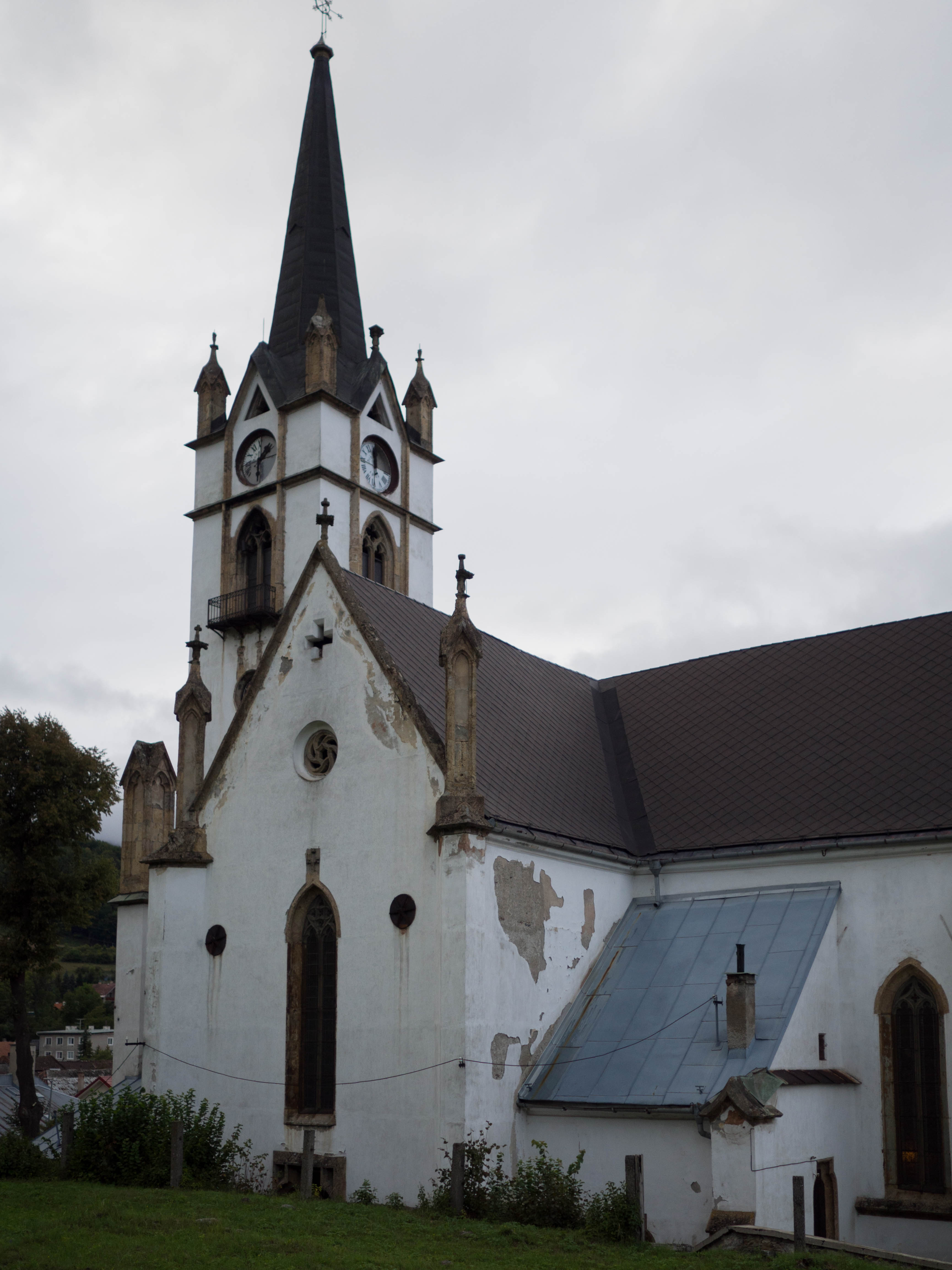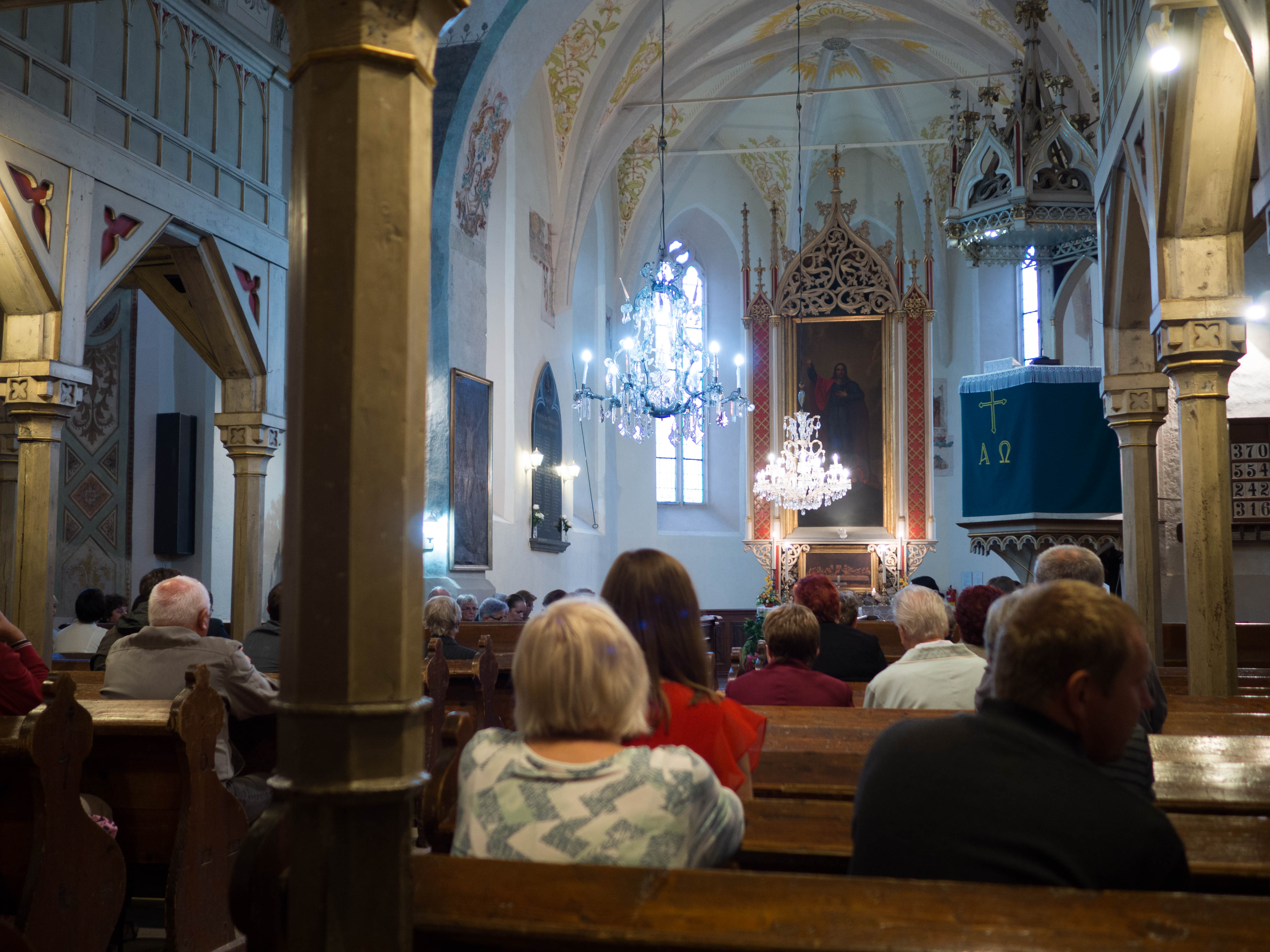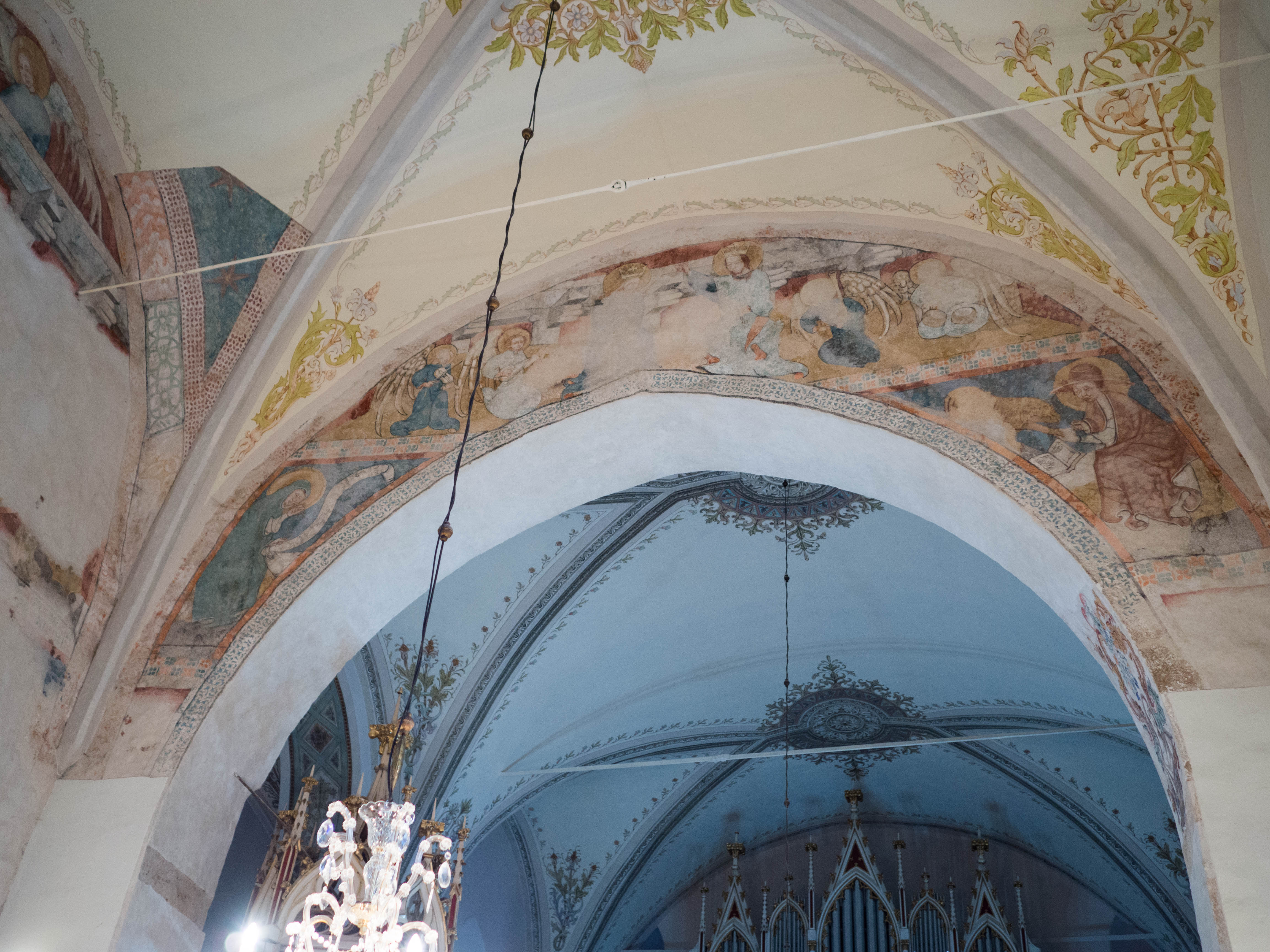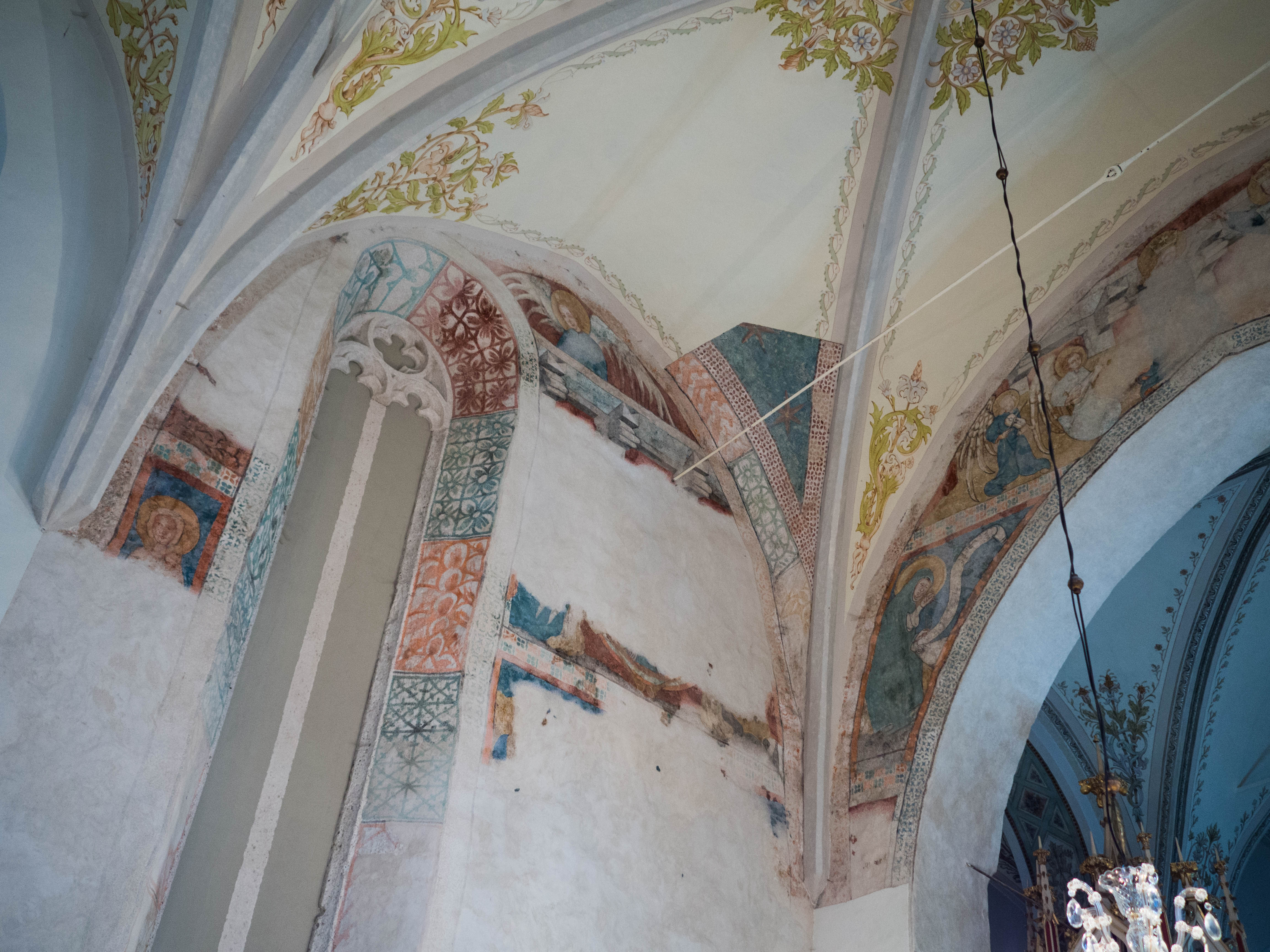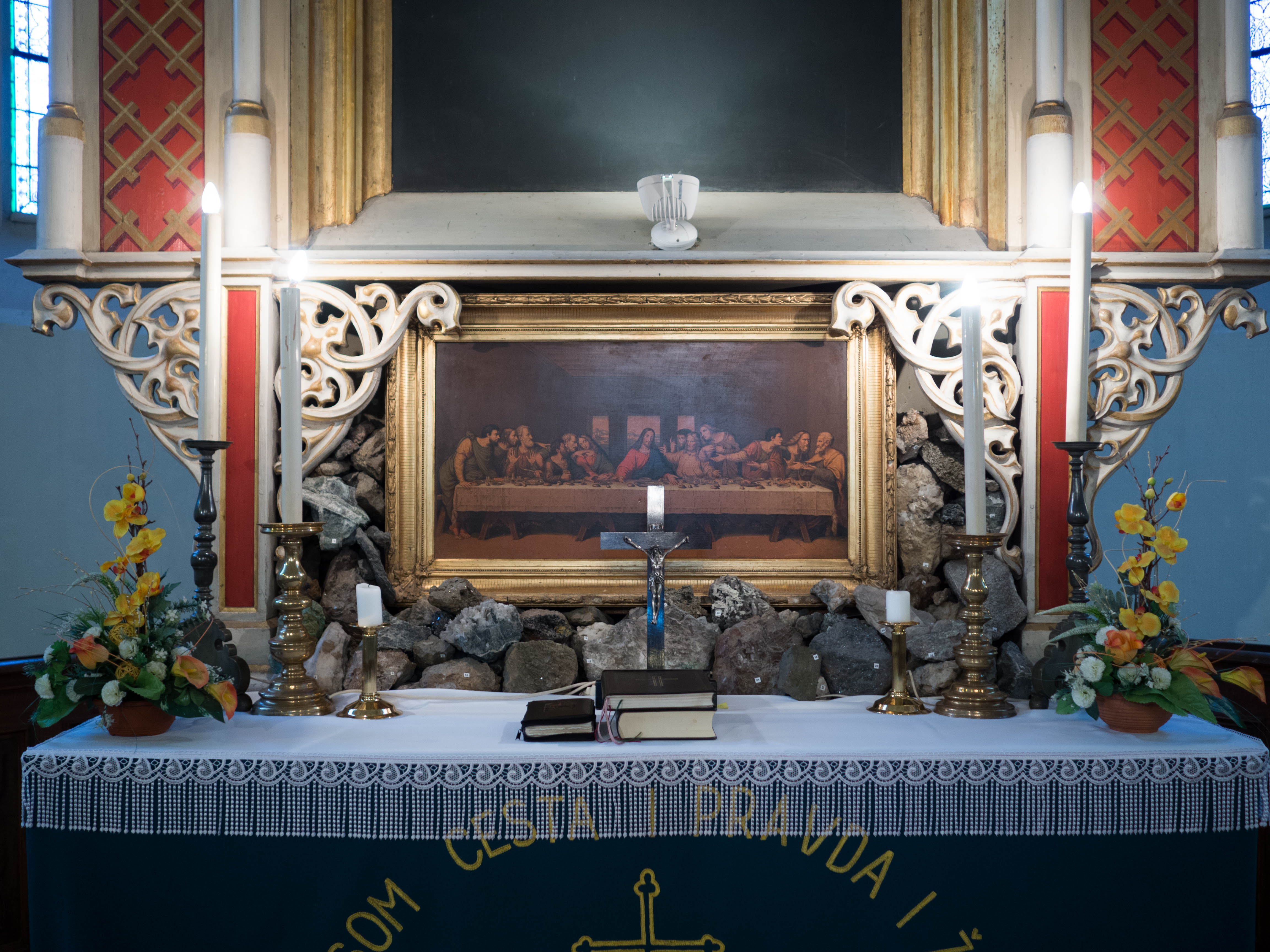A Gothic St. Valentine Chapel from the first half of the 14th century and a late Gothic church from the end of the 15th century stood on the place of the present Lutheran Church in Dobšiná. Those buildings were rebuilt and unified in 1641. In 1727, the church was enlarged with a transept and, afterwards, connected with a free-standing tower. In 1855, the church burned down during a fire affecting the whole city. It was subsequently repaired and completed with wooden matroneums. In 1891, the exterior was redesigned in neo-Gothic style according to the project of architect K. Benka and, in 1902, the interior was painted in art nouveau style by the Vienna painter W. Wolfram.
Fresco paintings from the late Middle Age were discovered in a chancel under these art nouveau paintings. The size and artistic quality of these frescos are a demonstration of the prosperity of the city in the second half of the 15th century. These paintings are known only since 2002, when they were discovered during the search for the chancel. The paintings are large fragments of figural depictions with a Biblical motif combined with ornamental bordering and stars on a light background of vaulted areas. The restoration of the paintings took place in 2004. Further research in 2008 brought to light new fragments of paintings, which are waiting to be uncovered and restored.
The late Gothic character of the building is also visible through the vaulting of the original sanctuary by Gothic rib vaults and the discovery of two unusually high late Gothic windows with a very well preserved stone window. Most of the paintings were created with the secco technique; the fresco paintings are in minority.
From the original representative painting of the chancel, only a torso was preserved. A few tiny fragments from the Passion Cycle, from which the scene of the Crucifixion can be identified, are visible on the northern wall and the end of the chancel.
On the south side of the presbytery polygon, two figures of saints have been preserved, one of which can be identified as St. Helen. A partially preserved depiction of the Last Judgement can be seen on the southern wall of the chancel. The figure of St. Michael Archangel can be found under the vault. Due to the height of the church, the area of the so-called Triumphal Arch also provided enough space for the painter who depicted the Coronation of the Virgin Mary at the top of the arch from the side of the chancel.
Two life-sized saints are on the sides of the Triumphal Arch: On the right there is one of the most important teachers of the Church St. Hieronymus, with a galero (cardinal hat). He is depicted according to a legend, as he is pulling a thorn out of a lion‘s paw, that followed him to the monastery. On the left side, St. Hildegard of Bingen is portrayed. This German abbess, mystic, visionary, writer, poet and author of texts sung by female Gregorian chants, was known especially as a folk healer. German miners from Saxony, particularly from around Bingen, who colonized Dobšiná in the 14th century, brought to this area her cult, which had to be extraordinarily strong if they painted her in their church next to the image of one of the most important Church fathers. The painting is thematically unique in Slovakia, and thus we decided to use Hildegard’s scroll as the logo of Dobšiná church.
The church contains a neo-Gothic altar from 1855 with the image of Christ the Saviour by Jozef Czauczik, finished by his student Teodor Boemm, a late baroque baptismal font and four large paintings of the Evangelists, from 1735, above the matroneums. The most interesting artefact of the church is a wooden memorial board placed in its sacristy. On the Renaissance board, a tragic event from 1584 is described in Latin and German, during which the city was attacked by the Turks. The city was ravaged and plundered, the inhabitants killed or taken away into captivity.
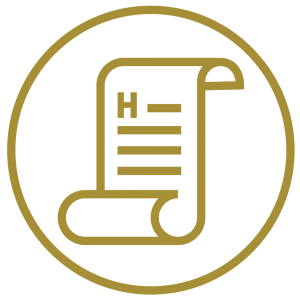 |
|
| Architecture: gothic | Construction: 1st half of the 14th century |
| Church: Lutheran Church | Patrocinium: originally St. Valentine |
| Circuit: Rožňava Circuit | |
| Contact person: Mgr. Radovan Gdovin, pastor | |
| Telephone number: +421 918 828 348 |


